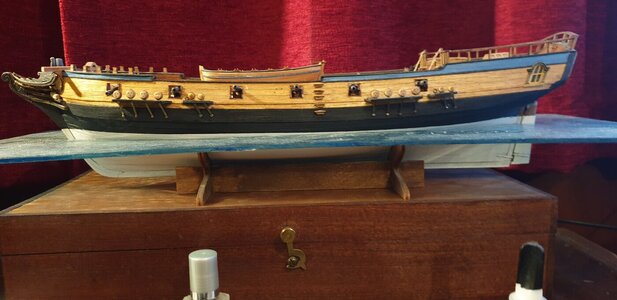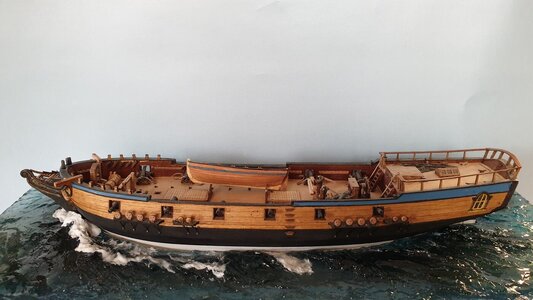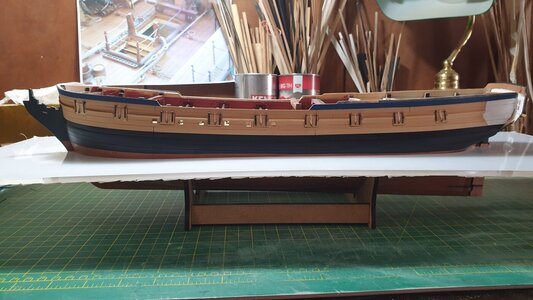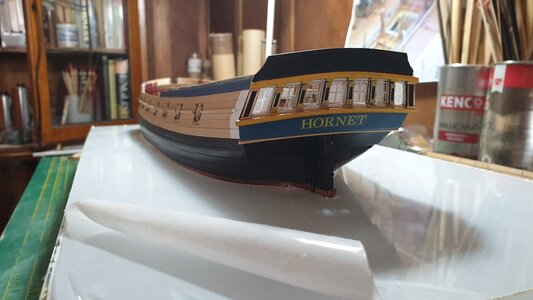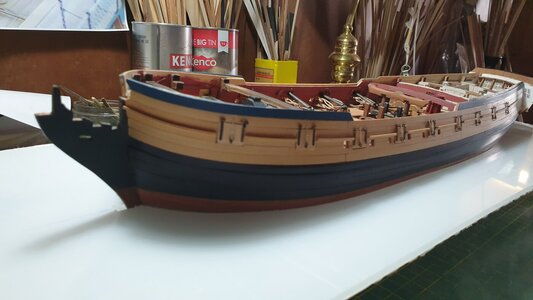- Joined
- Jun 17, 2021
- Messages
- 1,670
- Points
- 488

To me, copper bottoms for sailing vessel models, like sails, are a moving target. What's most satisfying aesthetically or realistically? How much detail to include at what scale? When does the effort to recreate a copper bottom (along with other aspects of a model, like sails) enhance the overall look of the model? When does the pursuit of documentary realism advance the art or get in the way? Aesthetics, for me is paramount. For others it is documentary accuracy and realism. I do not presume to judge. I mentioned before an admonition included in the 1955 Model Shipways kit instructions for the "Young America, that (because of its' tiny scale,1:192): "Models should be judged by what is included, not left out".
In painting do you come down more on the side of Thomas Eakins, or Claude Monet?
I have struggled with the idea of using actual copper and reproducing the rivets being a bridge too far, depending on the scale of the model and its' purpose. What should the patina look like? (Copper only turns green when exposed to air.) I have no idea of what copper patinized by long exposure to seawater should look like. At what scale distance do you cease to see the presence of rivets. How many to include? (Clipper Ships had dozens per plate, in a complex geometric pattern.) Or even the distinction between individual plates for that matter? A similar problem: at what scale does what would have been gloss varnish or paint cease to be realistically gloss and become satiny or even flat?
Following is one of my attempts at a more impressionistic approach: Mahogany (or Sapele) veneer (for its' Sienna brown base color, pickled with copper acrylic paint (Solvent paint dries too quickly.) that is, paint wiped on then wiped off while still wet to leave a trace of the applied color imbedded in the grain of the wood.
I am enclosing pictures of a bottom done this way on a fairly modest sized hull, about eleven inches long, in hopes of producing a subtle, unobtrusive, suggestion of a copper bottom, with a pleasing patina and texture, where the model is wearing the "copper" bottom and not the other way around.
It is one attempt at an acceptable solution. The subject, as always, is open to criticism and discussion.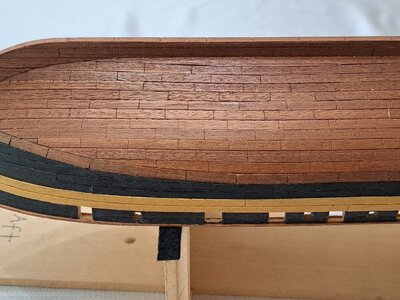
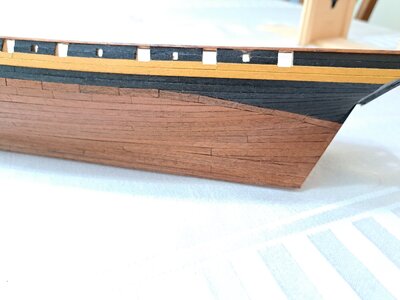
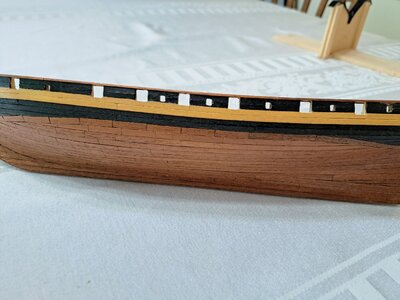
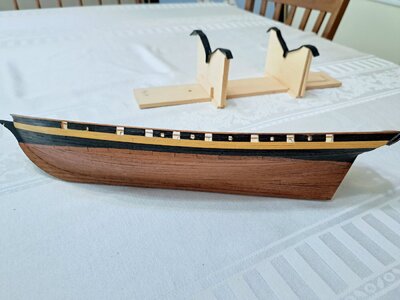
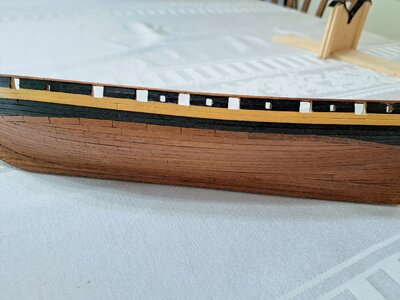
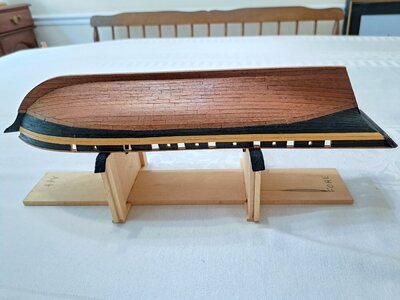
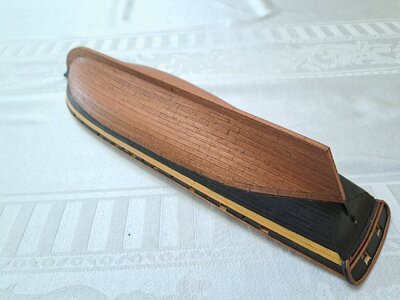
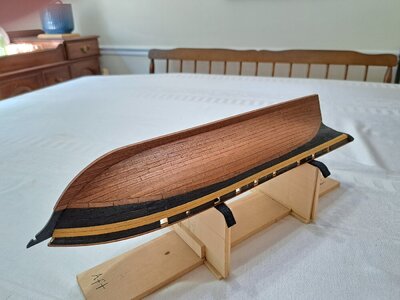
In painting do you come down more on the side of Thomas Eakins, or Claude Monet?
I have struggled with the idea of using actual copper and reproducing the rivets being a bridge too far, depending on the scale of the model and its' purpose. What should the patina look like? (Copper only turns green when exposed to air.) I have no idea of what copper patinized by long exposure to seawater should look like. At what scale distance do you cease to see the presence of rivets. How many to include? (Clipper Ships had dozens per plate, in a complex geometric pattern.) Or even the distinction between individual plates for that matter? A similar problem: at what scale does what would have been gloss varnish or paint cease to be realistically gloss and become satiny or even flat?
Following is one of my attempts at a more impressionistic approach: Mahogany (or Sapele) veneer (for its' Sienna brown base color, pickled with copper acrylic paint (Solvent paint dries too quickly.) that is, paint wiped on then wiped off while still wet to leave a trace of the applied color imbedded in the grain of the wood.
I am enclosing pictures of a bottom done this way on a fairly modest sized hull, about eleven inches long, in hopes of producing a subtle, unobtrusive, suggestion of a copper bottom, with a pleasing patina and texture, where the model is wearing the "copper" bottom and not the other way around.
It is one attempt at an acceptable solution. The subject, as always, is open to criticism and discussion.








Last edited:





